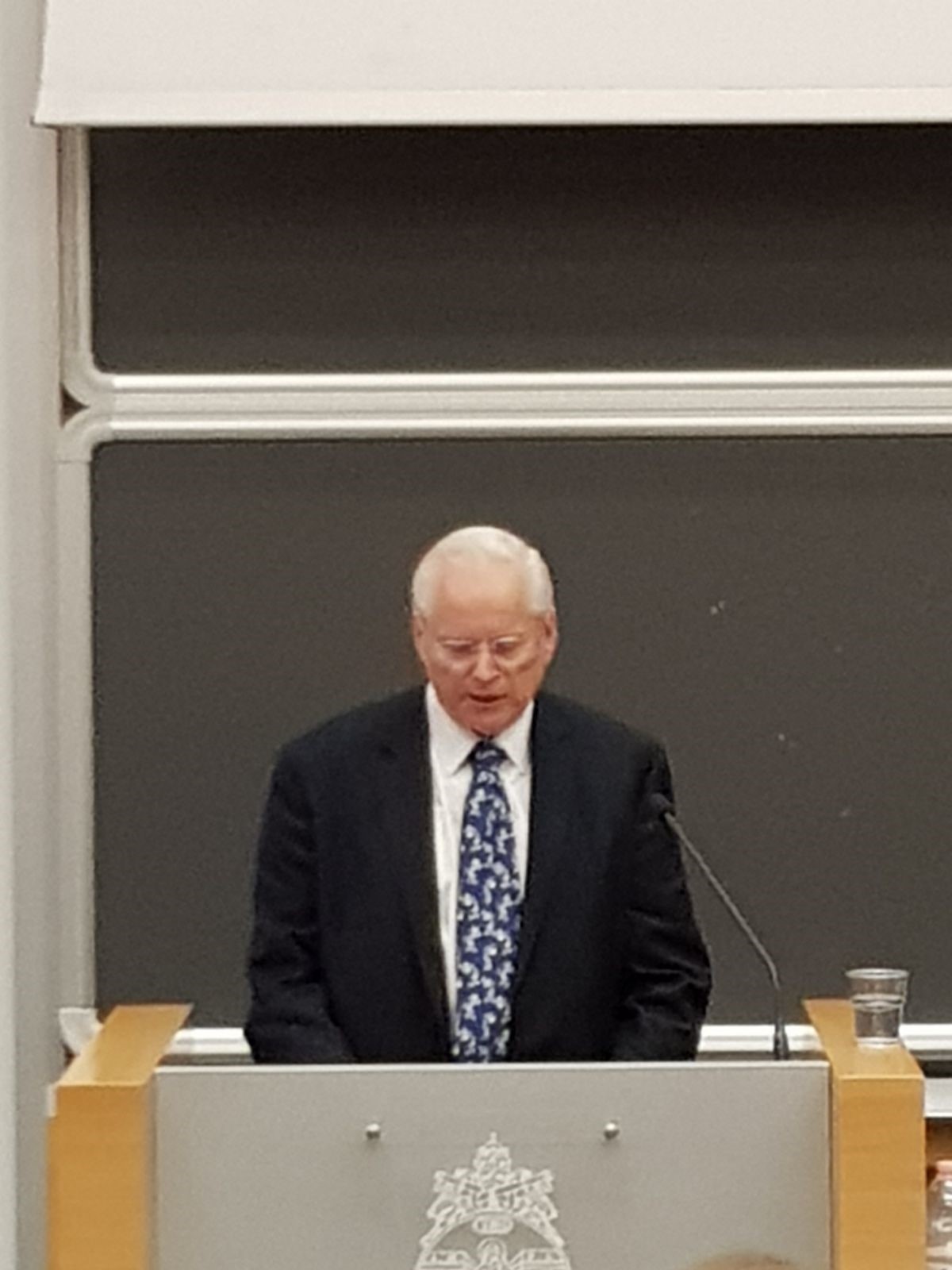Reflections on a Term at the Gregorian University

Mel presents his public lecture at the Gregorian University. The students from the Lay Centre had given this necktie to Mel on his birthday, and dared him to wear it when he gave this lecture. It featured Bugs Bunny.
One of the highlights was the opportunity for me to give a public lecture at the Gregorian on March 19. The Gregorian advertised the lecture with large posters placed throughout the academic community, at the Lay Centre, in various Vatican offices, among the Jesuit and Dominican communities, and among other communities like the Focolare and Chemin Neuf. About 100 people attended, including some of the Gregorian’s Jesuit community. Some of my students attended, as did others from schools such as the Biblicum, across the street, and the Angelicum. My address was titled, “Can We Imagine an Ecumenical Future Together?” It lasted 75 minutes followed by 45 minutes of Q and A. The discussion was rich. There were many positive comments. Many of those who spoke said that they had been challenged to think differently about Pentecostals and noted that they had learned something new. [Editor’s note: For what may be a limited time, the flyer about this lecture is here. Read the PneumaReview.com announcement about this lecture.]
I began the paper, reading from Matthew 16:1-4 (NRSV), in which the Pharisees and Saducees, wishing to test Jesus, asked Him for a sign. Jesus refused to give one, saying that they had failed to read the signs they already had. I then asked whether such signs exist today and if so, what are they, and are we reading them as we should. I mentioned, for instance, the massive global migration currently in process, new challenges to various cultures as a result of this movement, and the persecution of religious minorities like the Rohingas in Myanmar. I made the point that at the beginning of the Pentecostal Movement, there were those who believed that the very existence of this Movement was a sign of the imminent return of the Lord. I outlined the classic Restorationist reading of history, played so well by Aimee Semple McPherson in her annual sermon, “Lost and Restored”.
Charles Parham, William J. Seymour, and Warren Carothers suggested that the Pentecostal Movement was a sign not only that the Second Coming was imminent, and that the unity of the Church was now possible, but that Pentecostals believed that they were the key to that unity.
In some ways, Pentecostals are not really Protestants. We did not emerge until 400 years after the Protestant Reformation. The fights of the 16th Century are not necessarily our fights. Because most churches rejected us, we have often stood against the whole Church, not merely the Catholic Church. I explained that Charles Parham, William J. Seymour, and Warren Carothers suggested that the Pentecostal Movement was a sign not only that the Second Coming was imminent, and that the unity of the Church was now possible, but that Pentecostals believed that they were the key to that unity.[3] The earliest Pentecostals sought to avoid the deadness that they saw in many churches, and the wildfire that they saw in others.[4] They tried to promote a middle way between the two.
“I have never been asked to compromise on a single word.” –Mel Robeck
Category: Ministry, Spring 2018


